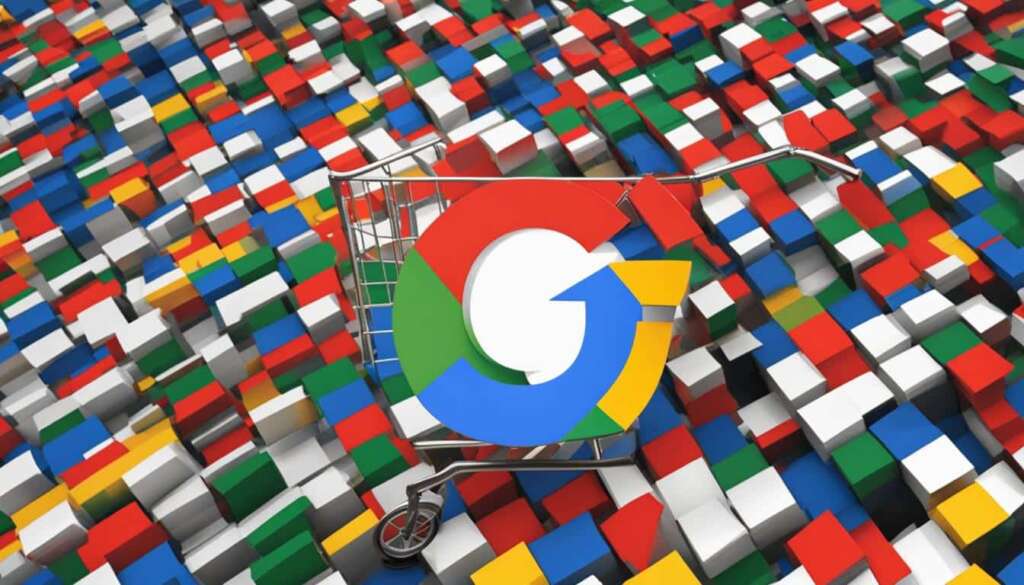Table of Contents
E-commerce managers face challenges in increasing revenue in today’s unpredictable economy. To overcome these challenges and achieve growth, it is important to implement proven strategies. In this article, we will explore the best e-commerce strategies that can lead to market success and boost online sales. Whether you are a seasoned e-commerce professional or just starting out, these expert tips and insights will provide you with valuable guidance.
Segmenting customers is one of the most effective strategies for businesses to understand their target market and tailor their marketing efforts accordingly. By dividing customers into subgroups based on shared characteristics, such as age, gender, psychographics, geography, and behavior, businesses can create more targeted marketing campaigns that address customer needs and spending habits.
Investing in PPC advertising is another key strategy for e-commerce success. PPC advertising allows businesses to increase brand awareness, drive customer loyalty, and quickly generate results. By competing with direct competitors in the digital advertising space, businesses can reach new customers and drive sales effectively.
Reaching customers through SEO is crucial for climbing Google’s rankings and driving organic traffic. A strong SEO strategy includes keyword selection, content optimization, website optimization, and building backlinks. By implementing these SEO practices, businesses can improve their online visibility, attract more target customers, and ultimately drive revenue.
In addition to SEO, growing social media presence, building email and SMS marketing strategies, streamlining on-site navigation, leveraging social proof and testimonials, and A/B testing everything are proven strategies that can propel the success of e-commerce businesses. Implementing these strategies and staying up-to-date with the latest trends and insights will ensure that your e-commerce business stays competitive and continues to thrive in the ever-changing digital landscape.
Are you ready to take your e-commerce business to the next level? Stay tuned for our upcoming article where we will delve deeper into each strategy and provide you with actionable steps to implement them. Get ready to unlock your e-commerce business’s full potential and achieve market success like never before.
Segmenting Your Customers
Market segmentation is a crucial strategy for businesses to effectively target their customers and tailor their marketing efforts. By dividing customers into subgroups based on shared characteristics such as age, gender, psychographics, geography, and behavior, businesses gain valuable insights into their target market’s needs and spending habits. This enables them to create more personalized and relevant marketing campaigns, increasing the likelihood of repeat purchases and customer loyalty.
Effective market segmentation empowers businesses to optimize their pricing strategies and stay competitive in the market. By understanding their customers’ unique preferences and behaviors, businesses can deliver tailored products and services that fulfill specific customer needs. This not only enhances customer satisfaction but also drives revenue growth.
Let’s take a look at an example of market segmentation:
| Customer Segment | Description |
|---|---|
| Young Professionals | Aged 25-35, urban dwellers, tech-savvy, seeking convenience and quality |
| Parents | Aged 30-45, suburban residents, family-oriented, prioritizing affordability and safety |
| Senior Citizens | Aged 65+, retirees, value comfort and accessibility, prefer personalized customer service |
In the example above, a business could create tailored marketing campaigns for each segment. For young professionals, they may focus on promoting convenience and technology-driven solutions. For parents, they could emphasize affordability and safety features. For senior citizens, personalized customer service and accessibility would be key selling points.
By understanding the diverse needs and preferences of their target market segments, businesses can develop marketing strategies that resonate with their customers on a deeper level. This enhances customer engagement and increases the effectiveness of marketing efforts.
Benefits of Market Segmentation
- Improved understanding of customer needs and preferences
- Increased customer loyalty and repeat purchases
- Higher customer satisfaction through personalized marketing efforts
- Optimized pricing strategies and competitive positioning
- Enhanced marketing ROI by targeting the most profitable customer segments
Segmenting your customers is a powerful tool in driving business success. It allows businesses to create tailored marketing campaigns that effectively address their customers’ needs and spending habits. By optimizing their marketing efforts through market segmentation, businesses can stay ahead of their competitors and achieve long-term growth.
Investing in PPC Advertising
PPC advertising, also known as pay-per-click advertising, has become a powerful tool for businesses to increase brand awareness, drive customer loyalty, and achieve quick results in a highly competitive digital landscape. With PPC campaigns, businesses can compete with direct competitors, reach new customers, and effectively promote their products or services.
PPC advertising offers a cost-effective way for ecommerce businesses to drive traffic and conversions. By strategically bidding on keywords related to their industry, businesses can ensure that their ads appear prominently on search engine result pages or social media platforms.
By investing in PPC advertising, businesses can achieve the following:
- Brand Awareness: PPC campaigns allow businesses to gain visibility and exposure among their target audience. Through compelling ad copy and targeted keywords, businesses can increase their brand recognition and attract potential customers.
- Customer Loyalty: PPC advertising enables businesses to engage with their existing customer base. By creating customized ad campaigns and targeting loyal customers, businesses can reinforce brand loyalty and encourage repeat purchases.
- Driving Results Quickly: Unlike organic marketing strategies, PPC advertising delivers immediate results. Businesses can quickly drive traffic and conversions to their website, accelerating their revenue growth and sales.
- Competing with Direct Competitors: PPC advertising provides businesses with a competitive edge by allowing them to target the same audience as their direct competitors. Through ad positioning, optimized landing pages, and compelling offers, businesses can attract customers and gain an advantage in the market.
To ensure the success of a PPC strategy, businesses should undertake the following steps:
- Set a Budget: Determine the amount of money to allocate to PPC campaigns and establish a clear budget to avoid overspending.
- Select Keywords: Conduct thorough keyword research to identify relevant and high-performing keywords that align with the business’s products, services, and target audience.
- Optimize Product and Landing Pages: Create compelling product descriptions and landing pages that align with the keywords and ad content. Optimize these pages to provide a seamless user experience and encourage conversions.
- Launch Campaigns: Implement and monitor PPC campaigns using platforms like Google Ads or social media advertising platforms. Regularly analyze campaign performance and make necessary adjustments to maximize results.
“PPC advertising is a highly effective channel for driving targeted traffic and achieving measurable results. By investing in well-planned and optimized PPC campaigns, businesses can increase brand visibility, stimulate customer loyalty, and outperform their direct competitors.”
Implementing a comprehensive PPC advertising strategy can significantly enhance a business’s online presence and drive revenue. It is crucial for ecommerce businesses to recognize the power of PPC advertising and leverage this channel to achieve their marketing goals.

Reaching Customers Through SEO
SEO is an essential strategy for ecommerce businesses looking to improve their Google rankings and drive organic traffic to their websites. Not only is it cost-effective, but it also has the potential to significantly impact revenue. By implementing effective SEO techniques, businesses can attract more targeted customers and increase their chances of success in the highly competitive online market.
One of the key aspects of SEO is keyword selection. By identifying the most relevant and commonly searched keywords in their industry, businesses can optimize their website content to match user intent. This improves their chances of ranking higher in search engine results pages and attracting more organic traffic. Additionally, optimizing product descriptions with relevant keywords can improve the visibility of individual products within search results.
Content optimization is another crucial aspect of SEO. By creating high-quality, informative, and engaging content that incorporates relevant keywords, businesses can improve their website’s visibility and credibility. This not only attracts more organic traffic but also increases the likelihood of converting visitors into customers. Furthermore, consistently updating and adding fresh content to a website demonstrates to search engines that the site is active and relevant, further improving its rankings.
To enhance their SEO efforts, businesses should focus on website optimization. This includes optimizing the technical aspects of the website, such as the site speed, mobile responsiveness, and user experience. Search engines prioritize websites that provide a seamless and user-friendly experience, so optimizing these factors can lead to higher rankings and increased organic traffic.
“Implementing effective SEO techniques can significantly impact revenue by attracting more targeted customers and improving search engine rankings.”
Building high-quality backlinks from reputable and relevant websites is another crucial component of SEO. Backlinks act as a vote of confidence for the credibility and relevance of a website, signaling to search engines that the site offers valuable content. By actively seeking out opportunities for backlinks and developing strong relationships with influencers or industry publications, businesses can enhance their SEO efforts and drive more traffic to their website.
Table: The Benefits of SEO for Ecommerce Businesses
| Benefit | Description |
|---|---|
| Improved Google Rankings | Higher rankings in search engine results pages lead to increased visibility and organic traffic. |
| Increase in Organic Traffic | Optimizing website content and technical aspects attracts more targeted customers. |
| Higher Revenue | Increased organic traffic and visibility lead to higher conversion rates and revenue. |
| Competitive Advantage | Outrank competitors and attract more customers in a crowded online market. |
By leveraging the power of SEO, ecommerce businesses can reach a wider audience, improve their search engine rankings, attract organic traffic, and ultimately drive revenue. With the right combination of keyword selection, content optimization, website optimization, and backlink building, businesses can position themselves for success in the highly competitive online marketplace.
Conclusion
Implementing the best e-commerce strategies is crucial for achieving market success and increasing online sales. By segmenting customers, investing in PPC advertising, reaching customers through SEO, growing social media presence, building email and SMS marketing strategies, streamlining on-site navigation, leveraging social proof and testimonials, and A/B testing everything, e-commerce businesses can propel their success.
Segmenting customers allows businesses to tailor their marketing efforts to specific target markets, delivering personalized experiences that cater to customer needs and spending habits. Investing in PPC advertising is an effective way to boost brand awareness, build customer loyalty, and drive results quickly, even when competing with direct competitors. Similarly, reaching customers through SEO helps businesses climb Google’s rankings and drive organic traffic, ultimately driving revenue and acquiring new customers.
Growing social media presence, building email and SMS marketing strategies, and streamlining on-site navigation further enhance the customer experience and create a strong brand image. Leveraging social proof and testimonials helps build trust and credibility with potential customers, increasing the likelihood of conversions. Lastly, A/B testing everything ensures continuous improvement and optimization.
By following these expert tips and insights and staying up-to-date with the latest trends, e-commerce businesses can stay competitive in the ever-changing e-commerce landscape, achieve market success, and drive growth in online sales.
FAQ
What are the best e-commerce strategies for market success?
The best e-commerce strategies for market success include segmenting customers, investing in PPC advertising, reaching customers through SEO, growing social media presence, building email and SMS marketing strategies, streamlining on-site navigation, leveraging social proof and testimonials, and A/B testing everything.
What is market segmentation?
Market segmentation is the process of dividing customers into subgroups based on shared characteristics such as age, gender, psychographics, geography, and behavior. It helps businesses understand their customers’ needs and spending habits, allowing them to create targeted marketing campaigns and increase the likelihood of repeat purchases.
What is PPC advertising?
PPC advertising is a digital marketing channel where businesses pay for their website’s advert to appear on search engines or social media channels. It is an effective way to increase brand awareness, customer loyalty, and sales. Ecommerce businesses use PPC campaigns to reach new customers and compete with direct competitors.
How does SEO help in reaching customers?
SEO (Search Engine Optimization) is essential for climbing Google’s rankings and driving organic traffic to e-commerce websites. By selecting the right keywords, optimizing website content, building backlinks, and optimizing product descriptions and the website for mobile, businesses can improve search engine rankings and attract target customers.
Why are these e-commerce strategies important for market success?
Implementing these e-commerce strategies is crucial for achieving market success and increasing online sales. They have been proven to drive growth in the ever-changing e-commerce landscape and help businesses stay competitive.













